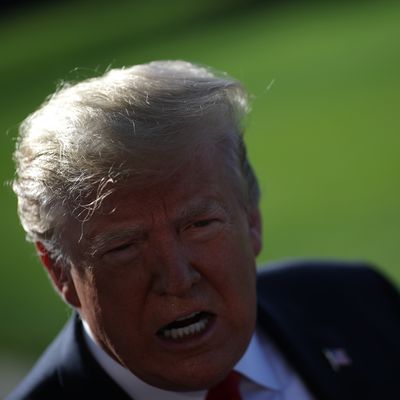
I wrote on Wednesday that “the punitive China tariffs may soon be five times as large as they were during their first year” due to President Trump’s actual and threatened actions to apply tariffs to more Chinese imports and at a higher rate of 25 percent. Now he has escalated again, threatening tariffs up to 25 percent on all Mexican imports.
On a first approximation, that means Trump has gone from threatening a five-times escalation of his preexisting trade war to threatening an eight-times escalation. This only goes further to my point that, while the economic effects of Trump’s tariffs have been limited so far, he has been enlarging them to a point where they are likely to have very material, negative effects on the U.S. economy — which, in turn, could hurt the president politically.
With the Mexico action, Trump has proved me wrong about something I’ve been saying for the past couple of weeks: that he appeared to be preparing for a prolonged trade dispute with China by easing off some other trade disputes. Or maybe I was right at the time about what he was doing, and then he changed his mind: NBC News reports immigration adviser Stephen Miller talked him into the Mexico tariffs during the president’s travels in Japan, over the objection of Robert Lighthizer, the U.S. trade representative and key architect of Trump’s China trade policy.
Just two weeks ago, Trump removed metal tariffs on Mexico and Canada, seeming to deescalate his trade dispute within North America. Those tariffs, on steel and aluminum, applied mostly to Canada in practice, since we don’t import a lot of metals from Mexico. He also put off a proposal, clearly dear to his heart, to impose tariffs on imported cars so the Germans will stop nastily sending us so many Mercedes.
In addition to easing some of the domestic economic costs imposed by his tariffs, the metals move was seen as a necessary concession to gain Canadian ratification of his revised version of NAFTA. But a reescalation with Mexico — remember, our “free-trade agreement” means we’re not supposed to impose tariffs on Mexico just because the president is mad about something — undermines Trump’s case to Mexico and Canada that he’ll abide by the new agreement if it’s ratified. Remember, Mexico’s ratification is still needed too. So is approval from the U.S. Congress, where the Mexico action is upsetting both House Democrats and key Republicans in the Senate.
I no longer have a theory about the president’s trade strategy. Easing off Mexico and focusing on China would have been smart economically and diplomatically if he intended to apply prolonged pressure on the Chinese to make trade concessions. His choice to open a second front in the trade war has predictably pushed stock prices down and will increase the domestic political costs he will face from his protectionist policies.
And because the Mexican tariffs have been applied for a purpose that relates to neither trade policy nor national security — he says the tariffs will last until unauthorized migration through Mexico to the U.S. ends, which, if taken literally, would seem to mean the tariffs will stay in effect forever — he is on relatively weak political and legal ground to impose them.
I do not think the president has built a position on trade that he will find defensible in the long run. Not only will he have to find a way to back off his aggression toward Mexico, he has undermined his ability to maintain a hard line on China. If the president was briefly capable of strategic thinking, he did not stick to the strategy for long.





























